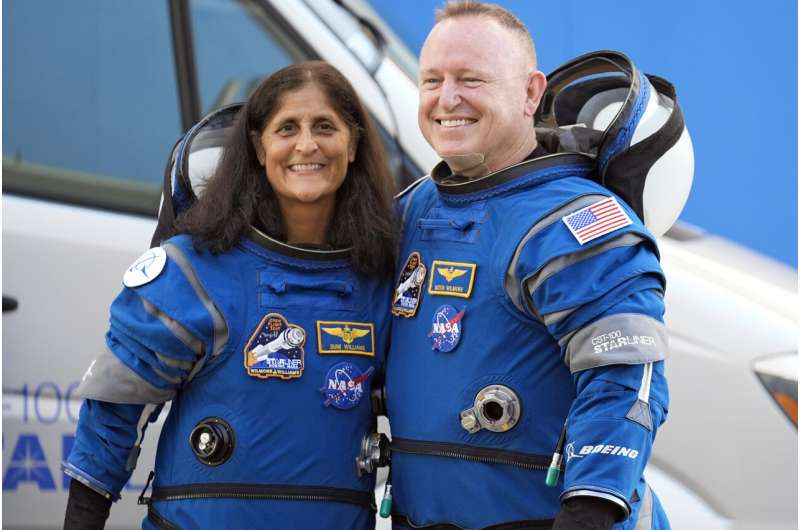
NASA said Thursday it will decide this weekend whether Boeing’s new capsule is safe enough to return two astronauts from the International Space Station, where they’ve been waiting since June.
Administrator Bill Nelson and other top officials will meet Saturday. An announcement is expected from Houston once the meeting ends.
Astronauts Butch Wilmore and Suni Williams launched aboard Boeing’s Starliner on June 5. The test flight quickly encountered thruster failures and helium leaks so serious that NASA kept the capsule parked at the station as engineers debated what to do.
SpaceX could retrieve the astronauts, but that would keep them up there until next February. They were supposed to return after a week or so at the station.
If NASA decides SpaceX is the way to go, Starliner would return to Earth empty in September.
Engineers are evaluating a new computer model for the Starliner thrusters and how they might perform as the capsule descends out of orbit for a touchdown in the U.S. Western desert. The results, including updated risk analyses, will factor into the final decision, NASA said.
Boeing said earlier this month that extensive testing of thrusters in space and on the ground demonstrated Starliner’s ability to safely return the astronauts.

It was the company’s first astronaut flight, delayed for years by a multitude of capsule problems. Two previous Starliner test flights had no one on board.
NASA hired Boeing and SpaceX a decade ago, after the space shuttles retired, to ferry its astronauts to and from the station. SpaceX has been at it since 2020.
© 2024 The Associated Press. All rights reserved. This material may not be published, broadcast, rewritten or redistributed without permission.
Citation:
NASA will decide Saturday if Boeing’s new capsule is safe enough to fly 2 astronauts back from space (2024, August 23)
retrieved 23 August 2024
from https://phys.org/news/2024-08-nasa-saturday-boeing-capsule-safe.html
This document is subject to copyright. Apart from any fair dealing for the purpose of private study or research, no
part may be reproduced without the written permission. The content is provided for information purposes only.

